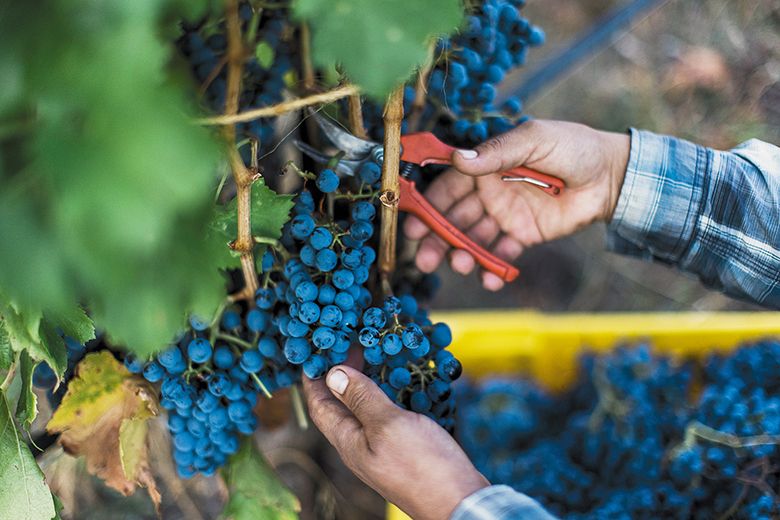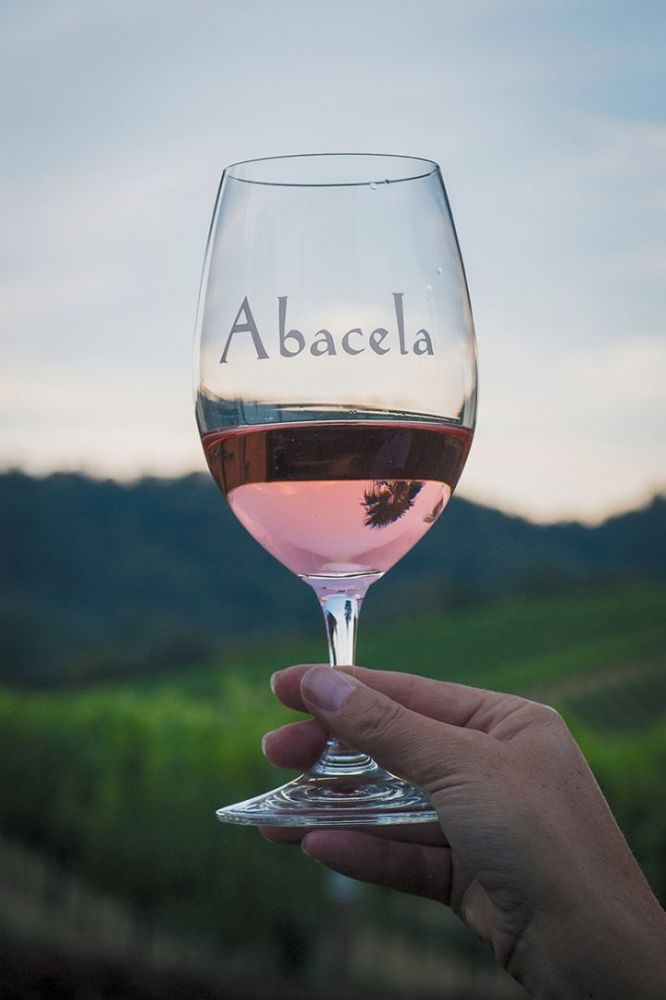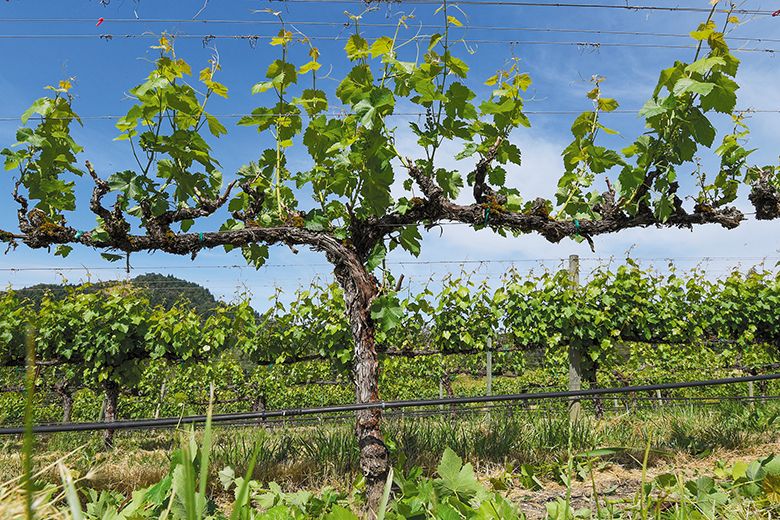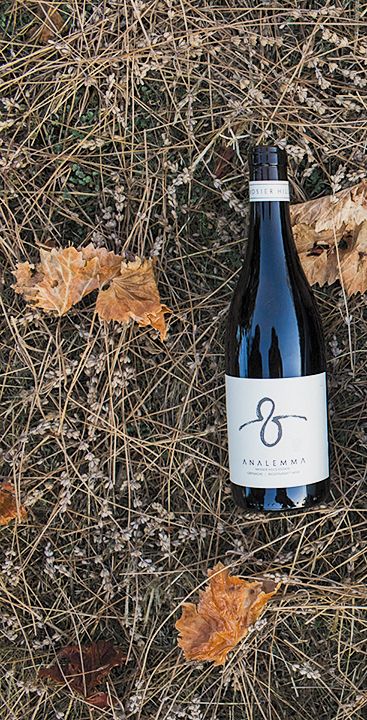Oregon’s Grenaissance
Meet some of Oregon's Grenache winemakers




By Aakanksha Agarwal
Grenache, a commonly planted red grape variety, traces its roots to the rugged terrain of Spain’s Aragon region. Prized for its versatility, Grenache is the foundation for many renowned wines, including France’s celebrated Châteauneuf-du-Pape. With bright acidity, vibrant red fruit flavors and the ability to express terroir, Grenache remains somewhat under the radar in Oregon, a region better known for Pinot Noir. However, a growing number of innovative winemakers have discovered our diverse climates and soils produce exceptional Grenache.
Greg Jones, CEO of Abacela Winery, describes the grape’s dual identity: “Grenache and Garnacha are the same grape variety. Garnacha is the pronunciation in Spain, whereas France uses Grenache. Newer world wine regions have adopted the use of both dictions, as has Abacela. The earliest recorded mention dates back to 1513 in a text called the Agricultura General, where Grenache was known as Aragones, described as the black-berried variety from Madrid.”
Grenache produces medium to fuller-bodied wines with moderate tannins and higher alcohol content. Its flavor profile often includes ripe-red fruit flavors of strawberry, raspberry and cherry, complemented by notes of spice, herbs and, occasionally hints of earthiness. The wine’s luscious, fruit-forward flavors and balanced acidity pair wonderfully with a variety of foods, from roasted meats to Mediterranean cuisine and spicy dishes.
Oregon’s potential for Grenache
As International Grenache Day (September 20) approaches, there’s no better time to explore the nuances of the grape and how it thrives in our state’s distinct winegrowing regions. Despite its differences from Pinot Noir— larger berries, thicker skins and greater susceptibility to oxidation— Oregon winemakers are crafting distinctive wines from the variety.
Though comprehensive data on Grenache plantings remains limited, Oregon winemakers embrace its potential. They face challenges including Grenache’s sensitivity to sunburn and cold temperatures, balancing its acidity and tannin structure along with ensuring optimal crop load. Despite these hurdles, they share a commitment to exploring the grape’s potential and pushing the boundaries of what this varietal can achieve in Oregon.
Anna Matzinger, co-owner and winemaker at Matzinger-Davies Wine Company, expresses the collective sentiment: “Balancing crop load and timing harvest are key to capturing both generosity and natural acidity.” This meticulous approach to vineyard management reflects other winemakers emphasizing terroir-specific strategies.
Jones adds, “Grenache is resilient. The vines are adaptable to a variety of soils, but they require a hot and relatively long growing season to produce complex red wines. I believe Grenache has a place here, particularly in warmer regions like Southern Oregon and Walla Walla, and offers valuable flexibility to winemakers. In warm climates, it’s relatively easy to grow and ripen, while in cooler areas, it may not achieve full ripeness for reds but can still produce exceptional rosés.”
A pioneering spirit in the Willamette Valley
Matzinger-Davies embodies the pioneering spirit in the Willamette Valley. Sourcing Grenache from Garnier Vineyard in the Columbia River Gorge since 2012, Matzinger highlights the unique soil composition— sandy clay loam with basalt protrusions— and proximity to the Columbia River as contributing to the grape’s distinctive character. “Challenges are balancing vitality of the vines and harvesting at the height of fruit expression while retaining the vibrancy and nerve of natural acidity,” she says. Her techniques include whole cluster fermentation and aging in large, neutral oak puncheons– both contribute to the grape’s tension and density.
While Grenache plantings in the Willamette Valley remain rare, Matzinger mentions other notable Valley producers. “Grant Coulter and Renée Saint-Amour at Hundred Suns Wine and Jessica and Paden West from Approachment Wine Company are doing remarkable work with Grenache, using fruit sourced from Washington’s Yakima Valley. They are fabulous souls and fellow McMinnville friends,” she adds.
Cool climate elegance in the Columbia Gorge
In the Columbia Gorge American Viticultural Area, Analemma Winery’s winemaker and co-owner, Steven Thompson, highlights the region’s constant maritime breeze. “This wind lowers the average summer temperatures dramatically here,” Thompson explains. “It creates wines with floral, delicate aromas and cool climate expressions.” With lavender planted among the rows, Thompson believes unique characteristics are imparted to the wine. “The oils from the lavender flowers blow onto the grape clusters, creating individuality and personality in our wines,” he notes.
Thompson also admires the work of James Mantone at Syncline Winery, who makes Rhone-inspired wines in the region. “James is a skilled grower and winemaker, producing beautiful Grenache,” Thompson says.
Terroir-driven diversity in the Walla Walla Valley
Matt Austin, co-owner and winemaker at Grosgrain Vineyards, works with multiple Grenache sites located on the Oregon side of the Walla Walla Valley. He believes each vineyard conveys unique, terroir-driven characteristics. At Grosgrain’s estate vineyard, the fractured basalt soils impart a mineral-inflected, volcanic character. “The strong winds result in smaller berries with thicker skins, giving us more tannin, color and concentration,” Austin explains. In contrast, the Las Canteras Vineyard in The Rocks District of Milton-Freewater has a softer, more savory profile reflecting its ancient riverbed soils.
Austin’s winemaking philosophy involves elegance and finesse, inspired by Burgundian techniques. “We aim for an aromatic, lighter, more transparent style with depth and length,” he says. Austin also salutes pioneer Christophe Baron of Cayuse Vineyards, noted for his distinctive Grenache from the Rocks District, along with other notable producers Rotie Cellars and Force Majeure.
Innovation and Adaptation in the Umpqua Valley
Abacela Winery in the Umpqua Valley focuses on the site’s varied climate allowing for the production of a full-bodied red wine and an elegant rosé. “At Abacela, we grow our own Grenache and are 100 percent estate produced. For the rosé, Grenache grapes are typically harvested at lower brix, then processed to extract to produce a coral pink wine with bright strawberry to watermelon notes. We process the red wine very similar to our other reds. It tends to be slightly lighter in color than many of our wines, with elegant tannins and lively acidity and cherry, raspberry, plum and lavender aromas,” he explains.
Jones mentions, “Grenache is susceptible to sunburn and we are currently experimenting with shade cloth to protect the fruit, hoping to see benefits similar to those in California.” He says Scott Kelley with Paul O’Brien Winery is “another fan of Grenache grown in the Umpqua Valley. Scott likes the fresher acidity the variety provides in the slightly cooler climate here and produces an elegant Southern Rhône-style GSM.”
Elevation and resilience in Southern Oregon
Craig Camp, Troon Vineyard’s general manager, accentuates the higher-elevation challenges and unique climate of the Applegate Valley. “The cool nights push Grenache to ripen a little later, but not enough to be a problem,” Camp notes. However, the region’s susceptibility to frost means careful vineyard management.
“Before the growing season begins, we prune our Grenache as late as possible in order to delay bud break. As harvest nears, we manage water stress to ensure the grapevines focus their available nutrients and carbohydrates down into the roots for the winter. Doing so protects the plants from frost and freeze events,” he explains.
Troon’s winemaker, Nate Wall, calls Grenache their most versatile red grape. “We use it for carbonic maceration wines, rosé and red blends. Fermenting whole clusters retains pretty floral aromas and softens the acidity while adding spiciness and maintaining freshness,” Wall says. He also cites other Southern Oregon producers such as Upper Five Vineyard, Long Walk Vineyard and Quady North for their remarkable work with Grenache.
AAKANKSHA AGARWAL is a wine, travel and lifestyle writer from India. Formerly a Bollywood stylist, she now resides in the U.S., embracing writing full-time while juggling family life and indulging in her passions for cuisine, literature and wanderlust.










